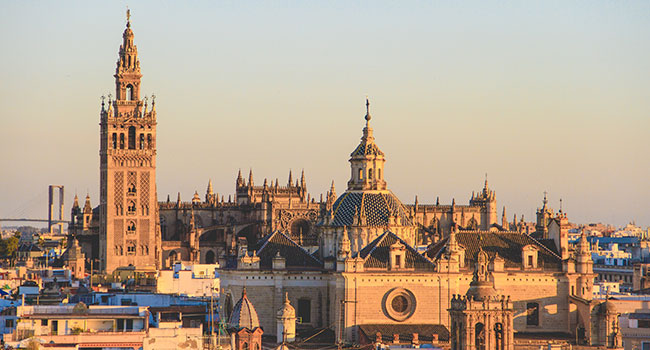 History shows that denying human cultural diversity through force is ultimately futile.
History shows that denying human cultural diversity through force is ultimately futile.
One of the most compelling lessons of travel in modern Andalusia in southern Spain is the impact of the attacks by the northern Catholic kings on the Moors and Jews of the great southern cities of Seville, Granada, Cordoba, Malaga and Ronda.
After hundreds of years (711 – 1492) of the practise of Islamic and Jewish traditions, architecture and advanced education, the Catholic armies marched south to drive the Moors and Jews back to northern Africa, and to other more tolerant parts of Europe and the Levant.
By 1492 the expulsion was complete, and the Spanish Inquisition was formed to question the faith of those who converted to Catholicism from Islam or the Jewish faith, and others who seemed to lack a marked enthusiasm for the practise of Catholicism. Rationality and the rule of law were noticeably absent in the early work of the Inquisition. Harsh sentences for the disbelieving or unbelieving were the norm, and they were meted out without hesitation.
The new Spanish Catholic regime was firmly in place when Columbus famously sailed the ocean blue in 1492 to discover the New World. In Andalusia, mosque after mosque were converted to Catholic cathedrals and churches. The great Seville Cathedral actually had the minaret tower of the mosque converted to a bell tower and the mosque was converted to the cathedral.
In Granada, Cordoba, Malaga and Ronda, mosques were also repurposed for the conquering faith. Strangely, many Muslim design features such as ceramic tiling and archways were left undisturbed.
The same pattern of religious suppression was repeated in Mexico, in the decades following the arrival of Spanish Conquistadors in the New World, starting with the Cortes expedition of 1519. Indigenous Mayan and Aztec temples fell to the imposition of Spanish Catholicism. Colonial centres like San Miguel de Allende eventually boasted magnificent cathedrals like La Parroquia de San Miguel Arcangel, along with many smaller brick and stone churches, which bear supposed witness to the miraculous adoption of the new faith.
Here the imposition of Catholicism could not involve complete expulsion of everyone from the indigenous homelands. Instead, the local population was viciously subdued by armoured cavalry with gunpowder, iron scattershot and blunderbusses. Indigenous farmers, hunters and soldiers were repurposed to Spanish ends, like producing gold and silver for European architectural decoration and resale, and food for the new elites.
With no parallel New World opportunity for the wholesale eviction of indigenous people, there were immediate, subtle opportunities for counter-revolution by los Indios in the form of religious syncretism, and pretend adoption of Spanish social and political customs. It is as if the Moors and Jews of the New World were allowed to stay as long as they converted to Catholicism and towed the party line.
Today, during religious festivals of apparent true believers in Mexico, especially in the smaller regional towns and villages, one can often discern an obvious blending of indigeneity and Catholicism, as traditional faiths couple with, blend and stealthily impose their own reality on that of the Holy Roman Church.
Arguably and ironically, the Moorish and Jewish expulsions from Andalusia completed 525 years ago have not created the intended uniform Catholic state. The modern pattern of European immigration has seen Muslims and Jews, in comparatively modest (but growing) numbers, returning to their old Andalusian homelands.
The moral outcome of the Moorish and Jewish expulsions from Andalusia, and the Conquistadors’ conquest of Mexico, is that ultimately they both failed. If anything, it turns out that the Moorish and Jewish architectural and cultural contributions to southern Spain have created the bedrock of a very successful regional tourism industry. The syncretic combination of the vibrant spirit of Mexican indigeneity and Old World Catholicism has done the same.
It’s impossible to tour either country without appreciating that spiritual and cultural suppression is a denial of both cultural strength and human reality. And contained within that reality are the seeds of economic and intellectual growth.
Presumably, any nation seeking to become great again should first study the lessons of history. It should be obvious that attempting to deny human cultural diversity by building walls, expelling religious groups and waging wars of conquest is ultimately futile.
The lessons of Andalusia and Mexico are that expulsion and conquest ultimately fail. The return of the vanquished is inevitable.
Mike Robinson has been CEO of three Canadian NGOs: the Arctic Institute of North America, the Glenbow Museum and the Bill Reid Gallery. Mike has chaired the national boards of Friends of the Earth, the David Suzuki Foundation, and the Canadian Parks and Wilderness Society. In 2004, he became a Member of the Order of Canada.
The views, opinions and positions expressed by columnists and contributors are the author’s alone. They do not inherently or expressly reflect the views, opinions and/or positions of our publication.
